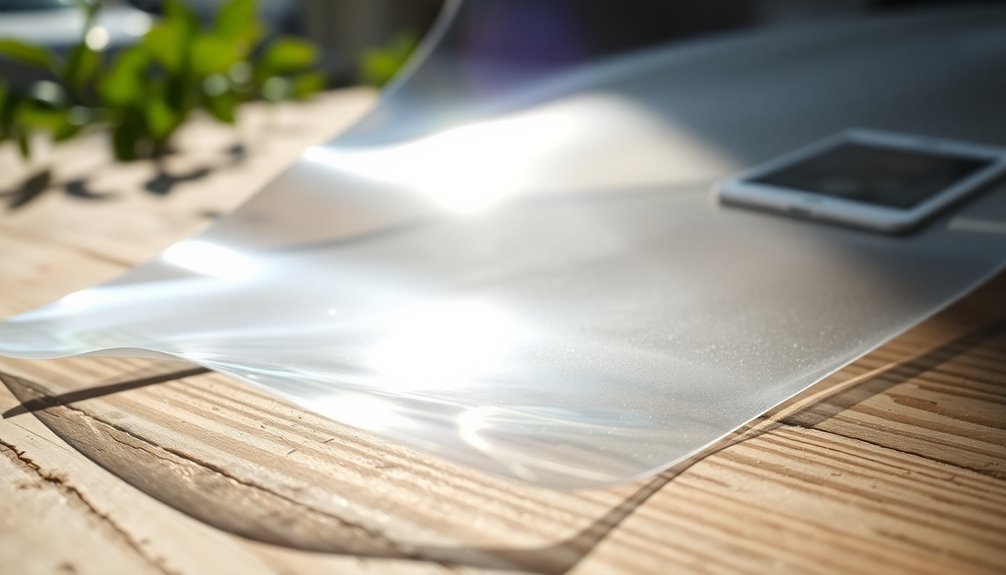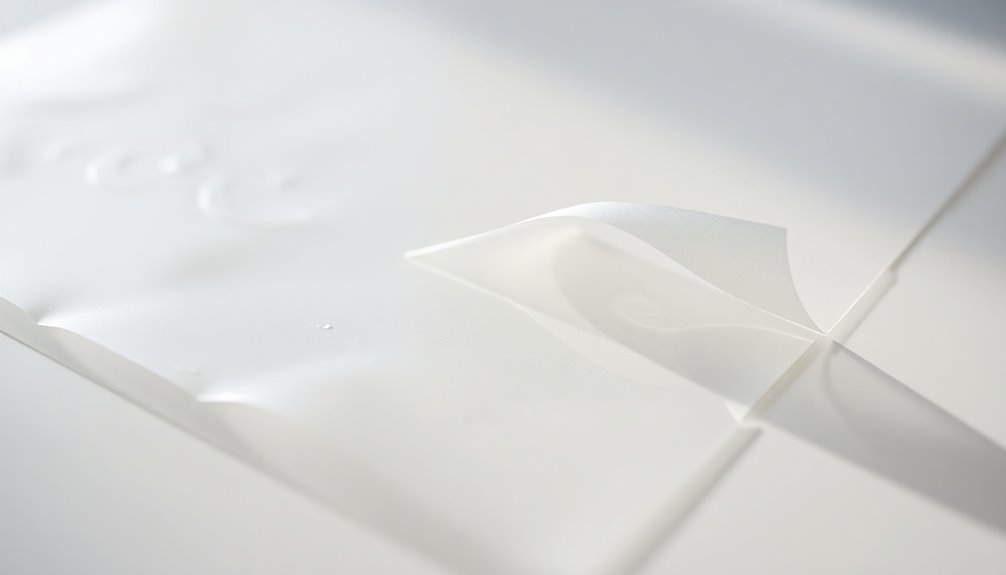PVC film is a versatile polymer material that you'll find in various applications, thanks to its durability and moisture resistance. It comes in different thicknesses, making it perfect for everything from packaging food to constructing moisture barriers in buildings. Whether you're looking at flexible options for retail packaging or rigid films for automotive parts, this material has you covered. Additionally, PVC film's printable surface makes it ideal for outdoor advertising. If you're curious about its economic benefits and environmental impact, stick around to uncover more fascinating details about this essential material.
Key Takeaways
- PVC film is a versatile polymeric material available in flexible and rigid types, with a thickness range of .003 to .030 inches.
- It offers excellent barrier properties, protecting products from moisture and contamination, ensuring longevity.
- Common applications include packaging, construction moisture barriers, automotive interiors, healthcare supplies, and outdoor advertising.
- The global PVC film market is projected to grow at a CAGR of 4-5%, driven by demand in various sectors.
- PVC film is durable, moisture-resistant, fireproof, and recyclable, contributing to economic efficiency and environmental sustainability.
Definition of PVC Film
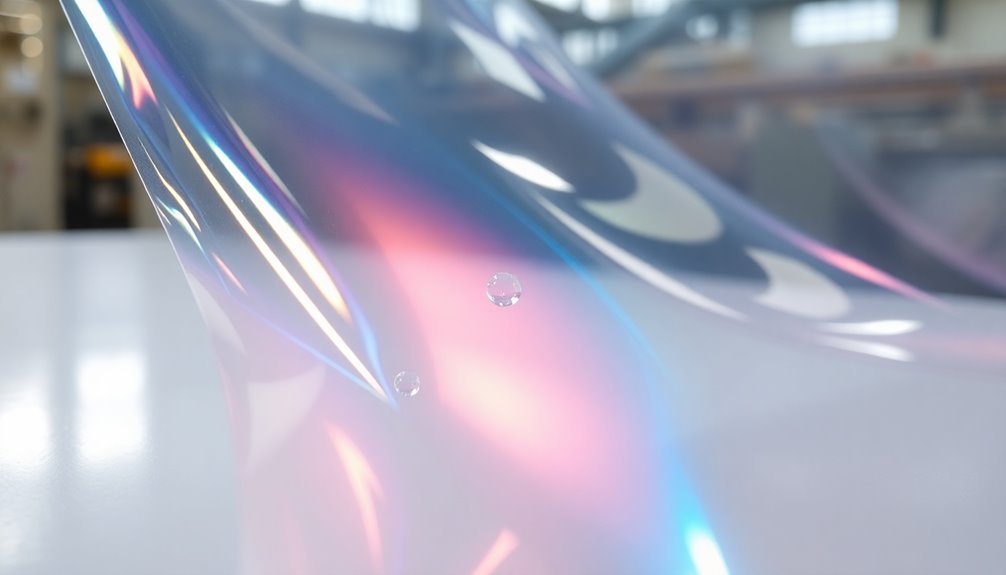
PVC film, or polyvinyl chloride film, is a versatile polymeric material that's thin and continuous, making it vital in various industries.
You'll find that PVC film comes in a range of thicknesses, typically from .003 to .030 inches, which allows it to adapt to numerous applications. This flexibility makes it ideal for uses such as packaging and construction, where it serves as a moisture barrier.
When you think of PVC, consider both flexible PVC film and rigid film options. Flexible PVC film is lightweight and can conform to various shapes, while rigid film provides enhanced structural support for more demanding applications.
The ability of PVC to act as a barrier is one of its standout features; it protects contents from moisture and contamination, ensuring the longevity of products.
In addition to its protective qualities, PVC film is also a printable surface, making it perfect for outdoor advertising materials and promotional signage.
With its diverse characteristics, PVC film positions itself as a significant material in both commercial and industrial settings, catering to a wide range of functional requirements.
Applications of PVC Film

With its diverse characteristics, PVC film finds its way into a multitude of applications across various industries. You'll see PVC films used in packaging materials, where their flexibility and durability create tamper-resistant seals and clamshell packaging.
In the construction industry, these films act as moisture barriers in windows, doors, and roofing, enhancing energy efficiency.
Moreover, the automotive sector utilizes PVC film for various components, including interiors and insulation, as it offers a lightweight and moisture-resistant solution.
In healthcare applications, PVC films guarantee safety and sterility through secure medical packaging, like blood bags.
Here are some key applications of PVC film:
- Packaging materials: Flexible and durable solutions for food and retail.
- Construction industry: Moisture barriers for enhanced energy efficiency.
- Automotive sector: Lightweight, moisture-resistant components.
- Healthcare applications: Secure, sterile packaging for medical supplies.
- Outdoor advertising: Weather-resistant materials for banners and signage.
These diverse uses illustrate just how crucial PVC film is across various sectors, making it an essential material in modern manufacturing and design.
Market Insights on PVC
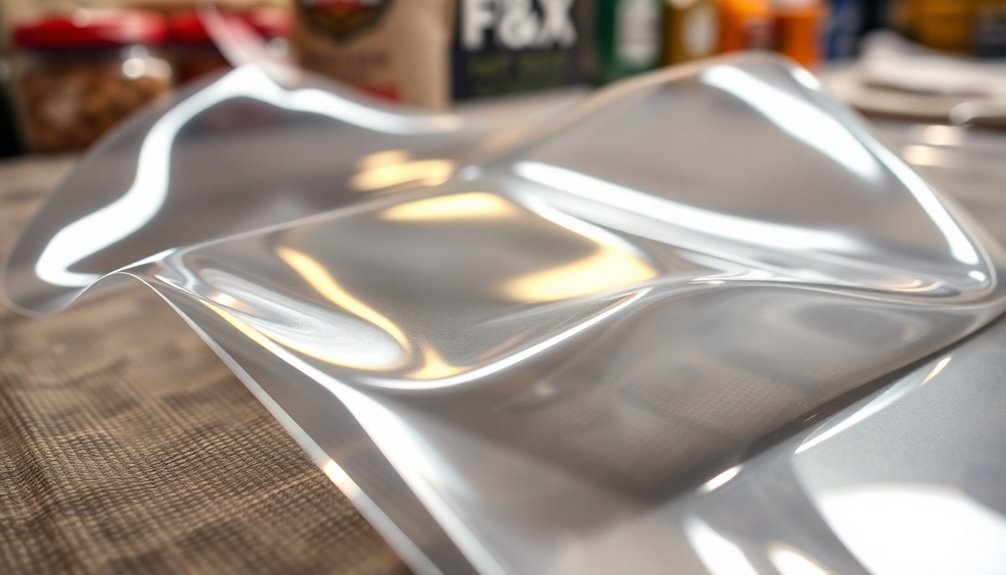
The PVC film market is witnessing robust growth, driven largely by escalating demand in both the packaging and construction sectors. Market research indicates that the global PVC film market size is set to expand at a compound annual growth rate (CAGR) of around 4-5% over the next few years.
This growth is fueled by the versatile applications of PVC film, including its use in outdoor advertising, protective coverings, and moisture barriers in construction projects.
You'll find that rigid PVC is a popular choice in the production of plastic films, thanks to its durability and adaptability. The Asia-Pacific region is emerging as a dominant market for PVC film, with rapid industrialization and urbanization in countries like China and India driving demand.
Major players in the industry are focusing on innovation and customization, tailoring their products to meet diverse customer needs and maintain a competitive edge.
As you explore this market, recognize the significant role that PVC film plays in various sectors, reinforcing its importance in today's economy. Its versatility and growing applications are clear indicators of continued market growth in the coming years.
Characteristics of PVC Film
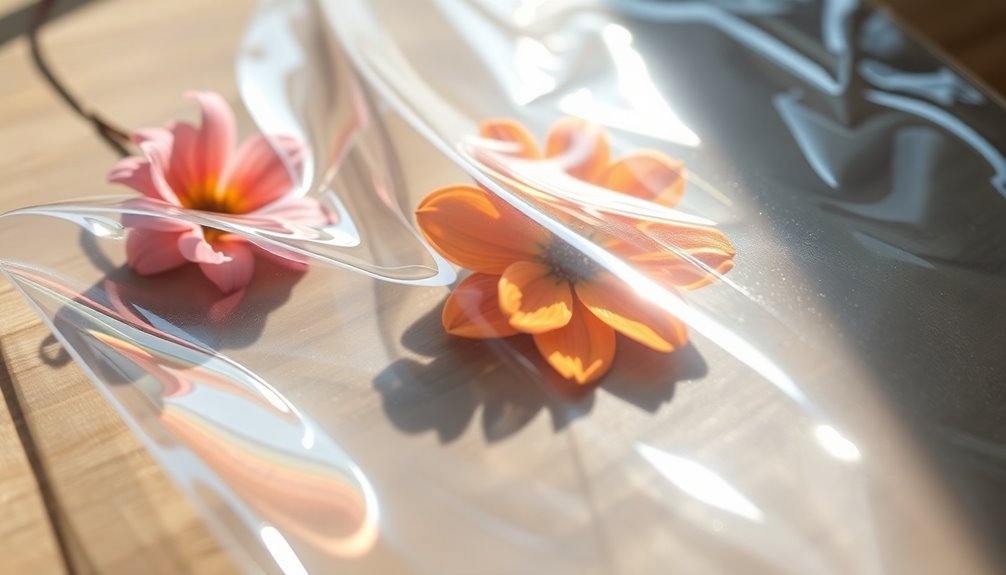
When you consider materials for various applications, PVC film stands out due to its remarkable durability and versatility. This thin polymeric material is commonly used in different industries, thanks to its unique characteristics.
Here are some key features of PVC film:
- Durability: It withstands wear and tear, making it perfect for long-lasting applications.
- Moisture Resistance: PVC film offers excellent protection against moisture, ideal for packaging and protective coverings.
- Thicknesses: Available in a wide range of thicknesses, typically from .003 to .030 inches, it caters to various application needs.
- Fireproof Characteristics: Its high chlorine content gives PVC film fireproof qualities, enhancing safety in sectors like construction and automotive.
- Dimensional Stability: It maintains its shape and integrity across a wide temperature range, essential for applications like signage and packaging.
Economic and Environmental Impact
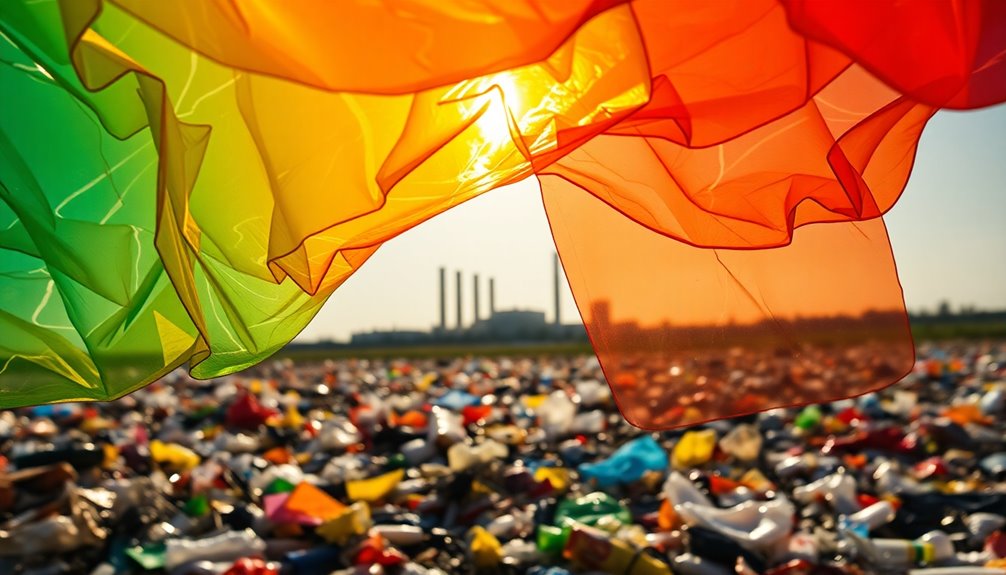
Considering its widespread use, PVC film greatly impacts both the economy and the environment. Its cost-effective nature means you can reduce production expenses considerably, enhancing economic efficiency across various industries. With low manufacturing costs, businesses can allocate resources more effectively, leading to increased profitability.
The recyclability of PVC film plays an essential role in promoting environmental sustainability. By reducing waste in landfills, it supports a circular economy where materials are reused rather than discarded. This not only benefits the planet but also helps businesses comply with growing regulations on waste management.
Moreover, utilizing PVC film can lead to long-term savings. Its durability and low maintenance requirements mean you won't have to frequently replace materials, cutting down on costs over time.
Environmentally friendly production practices in the PVC industry prioritize the elimination of harmful substances, ensuring safer applications for consumers.
Finally, the energy-efficient properties of PVC film, such as its thermal insulation capabilities, contribute to energy cost savings in buildings and other applications. This dual advantage solidifies PVC film's position as a smart choice for those looking to balance economic benefits with environmental responsibility.
Frequently Asked Questions
What Is PVC Film Used For?
PVC film's used in various industries due to its versatility.
You'll find it in packaging, providing durability and tamper resistance for products.
In construction, it acts as a moisture barrier, perfect for insulation.
The automotive sector employs it for interior fixtures, thanks to its fireproof qualities.
In healthcare, you'll see it in secure medical packaging.
Finally, in graphic arts, it enhances signage and promotional materials with its clarity and impact resistance.
Is PVC Film Food Safe?
Yes, PVC film is food safe. It meets FDA regulations, ensuring you can use it for direct food contact without worries.
When used correctly, it doesn't leach harmful chemicals into your food, keeping it safe for consumption. Its high clarity and durability protect your food from contamination and environmental factors.
You'll find it commonly used in food packaging, clamshell containers, and protective coverings, making it a reliable choice for food-related applications.
What Is the Difference Between PVC and PET Film?
When comparing PVC and PET film, you'll notice key differences.
PVC film's great for flexibility and cost-effectiveness, while PET film offers superior strength and clarity.
If you need something that can handle higher temperatures, PET's your best bet since it withstands more heat without deforming.
Additionally, PET's more environmentally friendly due to its recyclability, making it a better choice for eco-conscious projects.
Ultimately, your choice depends on the specific requirements of your application.
Is PVC the Same as Plastic?
No, PVC isn't the same as all plastics.
While PVC, or polyvinyl chloride, is a type of plastic, the term "plastic" refers to a broad range of synthetic materials.
PVC has unique properties, like durability and chemical resistance, that set it apart from other plastics.
You'll notice that PVC is often chosen for applications requiring safety standards, thanks to its non-toxic nature and compliance with health regulations.
Conclusion
To summarize, PVC film is a versatile material with a wide range of applications, from packaging to construction. Its unique characteristics make it a popular choice in various industries, while the market continues to evolve. However, it is crucial to evaluate both the economic and environmental impacts of PVC film production and usage. By staying informed, you can make better decisions about its application in your projects and contribute to more sustainable practices in your industry.

